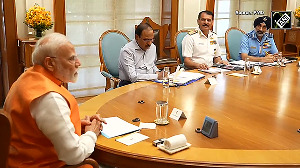Infrastructure and inflation targeting are expected to be top priorities for the new Reserve Bank of India governor, says A V Rajwade.
 When the present governor of the Reserve Bank of India (RBI) took charge in September 2013, there was “taper caper” in the Indian currency market.
When the present governor of the Reserve Bank of India (RBI) took charge in September 2013, there was “taper caper” in the Indian currency market.
The worry was that the tapering of monetary easing in the US would lead to capital flight from India, and the rupee fell sharply.
The central bank managed to halt the slide by intervention and by taking steps to augment reserves using other means.
One wonders whether Urjit Patel’s first problem when he takes over at the end of next week could be exactly the opposite: strong capital inflows appreciating the rupee further in both nominal and real terms.
The advanced industrial economies are in the midst of low to negative interest rates and growth.
Equities are perhaps fully priced and sovereign bonds are offering return-free risk: when interest rates go up to normal levels, investors will face a huge loss.
Large institutional investors such as pension funds and life insurance companies are already worried.
In sharp contrast, some emerging market economies (EME) are experiencing both high interest rates and growth, and should look attractive to foreign investors in terms of the risk: return trade-off.
To be sure, some EMEs (commodity exporters, for example) are in a slump, and many others - from Brazil in the west to Malaysia in the east - are facing political/corruption crises at the highest levels.
Amongst EMEs, surely India and China stand out, both in terms of growth and political stability. Hence my expectation that we may face sharply increased portfolio inflows and an upward pressure on the rupee.
If this scenario holds, one hopes the RBI governor would avoid the temptation to allow the rupee to appreciate further to help achieve the inflation target: the six-country real effective exchange rate index already evidences 25 per cent appreciation.
As Chief Economic Advisor Arvind Subramanian said in his India Policy Forum Lecture last month, a consumption-led growth strategy cannot lead to eight per cent sustained growth; we need an export-oriented strategy to achieve this.
Such a strategy would also give a fillip to domestic manufacture replacing imports, but needs a supportive exchange rate policy.
Coming to inflation targeting, I can do no better than quote from the International Monetary Fund’s (IMF) working paper, “Monetary Transmission in Developing Countries: Evidence from India” by Prachi Mishra, Peter Montiel and Rajeswari Sengupta published earlier this month, and based on data from 1996 to 2014: “While pass-through from policy rates to bank lending rates is incomplete, there is some evidence that such pass-through exists.
Our results, however, provide no support for the second step of monetary transmission, or any effect of monetary policy shocks on aggregate demand, as recorded either in the index of industrial production gap or the inflation rate.
A second channel of transmission that one might expect to be important in India, given its floating exchange rate regime - the exchange rate channel - also does not receive much support from our results.
The response of the exchange rate to monetary policy shocks is in the right direction but the magnitude is very small.”
In short, monetary policy has not been very effective in controlling inflation in India over 1996-2014, when the inflation measure used was the wholesale price index (WPI): it could be even less effective when the measure is the consumer price index (CPI), given that food and fuel, which carry half the weight in the index, are not very susceptible to demand management through monetary policy.
The recent experience raises a few questions:
- Should the target be “core inflation”, net of food and fuel? Are ¼ per cent changes ineffective?
- How important are “demographics” to fixing the target?
- What to do when the gap between the CPI and the WPI is wide, as it has been in 2015-16 and more recently?
The last issue is also of relevance to the financial health, particularly of capital-intensive businesses, and hence of the banking industry.
Surely, Patel knows the problems in infrastructure financing better than anybody, given his experience in IDFC.
In pursuit of fiscal austerity, are we transferring investments, which need public financing to the commercial banking sector - and damaging its health? Even IMF research is now questioning whether the virtues of neoliberalism, of which balanced budget is an element, have been oversold.
All these issues would pose major challenges for Patel, particularly as he had chaired the committee that recommended the CPI inflation targeting approach, which has recently been formalised.
And surely, better consensus between Delhi and Mumbai is going to be crucial if growth is to be maintained or increased.
The author is chairman, A V Rajwade & Co Pvt Ltd.
Photograph: Reuters








 © 2025
© 2025